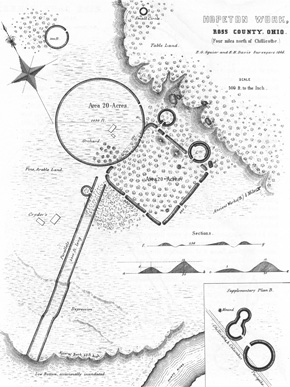MOUND CITY
ACTIVITIES AND AGRICULTURE
In its day, Mound City was much more than just a silent “necropolis” or “city of the dead.” There was a lot going on here,
including various building projects right up until the final, enclosing wall was built. And maybe a lot of parties and
festivals: the lowest layers of soil deposited in the wall contain large amounts of charcoal and deer bone. Site archaeologist
Bret Ruby:
It was a much more active place; it was used for a whole variety of functions including feasting. Another point
this shows about Mound City is that the embankment wall was probably one of the last things constructed. What you
see out there today is its final form, essentially after its abandonment. So it’s important to think of this as
a place that grew over time – maybe as much as four centuries, which is an incredibly long time span, many generations.
Hopewell society benefited from the fertility of the region’s ecosystems, but also practiced a well-developed agriculture.
Archaeologist Ruby explains:
Hopewell people were farmers, they were participating in the transition between a hunting and gathering lifestyle into
a farming lifestyle, including the domestication of starchy, oily plants. They were clearing ground, planting and
harvesting crops – fully committed agriculturists. There would have been significant openings in the forest, caused by
clearing ground for agriculture. They’re moving, clearing plots, using them for a period of years, and then clearing other
plots. So it’s a shifting movement across the landscape. New plots are being opened, old plots abandoned and
reclaimed by nature.

The Hopeton Earthworks are part of Hopewell Culture National Historic Park, though not currently open to the public.


